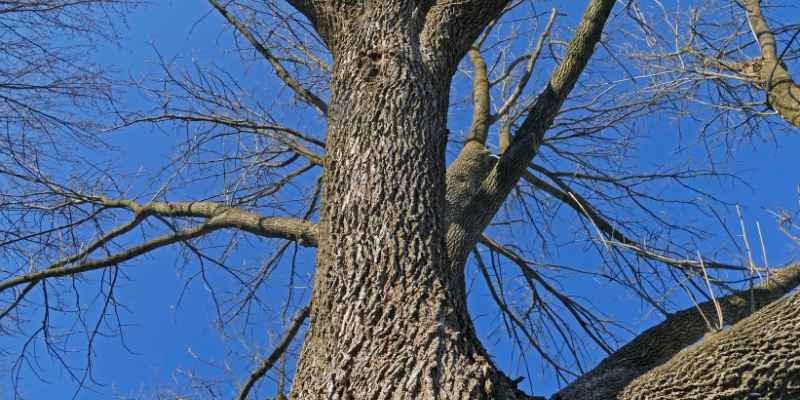Wood ash is beneficial to trees, as it provides potassium and other essential nutrients for growth and health. Trees like wood ash for its nutrient-rich properties, aiding in overall vitality.
Wood ash can help neutralize acidic soils, preventing nutrient deficiencies and promoting healthy root development. Additionally, it can deter pests and diseases, acting as a natural protector for trees. When applied in moderation, wood ash can be a valuable resource for maintaining the well-being of various tree species in a sustainable manner.
The Secret Ingredient: Wood Ash In Gardening
Why Wood Ash?
Wood ash contains essential nutrients that can benefit the growth of various plants and trees. The primary components of wood ash include potassium, calcium, and magnesium, which are crucial for the development of healthy and robust plants.
Safety First: Using Wood Ash Wisely
When using wood ash in gardening, it’s important to exercise caution and use it wisely. Avoid using ash from materials such as glossy paper, colored paper, cardboard, or treated wood, as these may contain harmful chemicals that can negatively affect plant growth. Additionally, avoid applying wood ash to acidic-loving plants such as blueberries, rhododendrons, and azaleas, as it can disrupt the soil pH balance.
Decoding The Benefits: What Wood Ash Brings To The Soil
Enhance soil fertility by applying wood ash, benefiting trees like apple, cherry, and pear. Wood ash aids in neutralizing acidity, providing essential nutrients for tree growth and fruit production.
Nutritional Profile: A Closer Look
Trees like wood ash for its nutritional benefits.
– Rich in potassium, phosphorus, and calcium.
– Contains trace elements like manganese and iron.
Ph Levels And Soil Health: Finding The Balance
Wood ash raises soil pH levels.
– Balances acidic soils.
– Enhances nutrient availability to plants.
Wood ash enriches the soil with essential minerals and helps maintain optimal pH levels. It provides potassium, phosphorus, calcium, manganese, and iron, benefiting plant growth and overall soil health.
Champions Of Ash: Trees That Thrive With Wood Ash
If you are looking for a natural and affordable way to fertilize your trees, wood ash may be the solution you need. While wood ash is not suitable for all types of trees, there are some species that thrive with this mineral-rich substance. In this article, we will introduce you to the champions of ash – the trees that love wood ash and benefit from its properties.
Fruit Trees: An Orchard’s Best Friend
If you have an orchard, you know how important it is to keep your fruit trees healthy and productive. One way to achieve this is by using wood ash. Fruit trees such as apple, cherry, peach, and plum love wood ash because it contains potassium, a mineral that is essential for fruit production. Wood ash also helps to regulate soil acidity, which is important for nutrient uptake. If you want to keep your fruit trees healthy and productive, consider using wood ash as a natural fertilizer.
Hardy Trees: The Strong And The Mighty
Hardy trees such as oak, maple, and ash are known for their strength and resilience. These trees can withstand harsh weather conditions and thrive in a variety of soils. However, even these tough trees need proper nutrition to stay healthy and strong. Wood ash is an excellent source of calcium, which is essential for strong cell walls and healthy growth. It also contains magnesium, which helps with photosynthesis and overall tree health. If you have hardy trees on your property, consider using wood ash to keep them healthy and strong.
Summary
If you have fruit trees or hardy trees on your property, wood ash can be an excellent natural fertilizer to help keep them healthy and productive. Fruit trees love wood ash because it contains potassium, while hardy trees benefit from the calcium and magnesium it provides. Remember to use wood ash in moderation and always do a soil test first to ensure your trees get the right nutrients they need. Try using wood ash as a natural and affordable way to keep your trees healthy and thriving.
A Step-by-step Guide To Applying Wood Ash

Wood ash can be a valuable resource for trees, providing essential nutrients and helping to maintain the pH balance of the soil. Understanding the proper timing and application methods for wood ash is crucial for ensuring its effectiveness. In this step-by-step guide, we’ll explore the best practices for applying wood ash to trees, from timing and frequency to application methods.
Timing And Frequency: When And How Often?
Timing: Apply wood ash to trees in the early spring or fall, avoiding periods of drought or excessive moisture.
Frequency: Apply wood ash every 2 to 3 years, depending on the specific needs of the tree and the soil conditions.
Application Methods: Getting It Right
- Surface Application: Sprinkle wood ash evenly around the base of the tree, extending to the drip line.
- Incorporation into Soil: Gently mix wood ash into the top layer of soil around the tree, being careful not to disturb the roots.
- Avoid Concentration: Do not apply large quantities of wood ash at once, as this can lead to excessive salt buildup and damage the tree.
Trees To Tread Carefully: When Wood Ash Can Harm
Wood ash is a popular soil amendment that can provide numerous benefits to plants and trees. However, it’s important to understand that not all trees are suitable for wood ash application. Some trees prefer acidic soil conditions, while others may show signs of overapplication if too much wood ash is used. In this section, we will explore acid-loving trees and the signs to watch for when using wood ash as a fertilizer.
Acid-loving Trees: Understanding The Exceptions
While wood ash is generally alkaline in nature, there are some trees that thrive in acidic soil conditions. These acid-loving trees are exceptions to the rule, as they can tolerate or even benefit from the application of wood ash. Examples of acid-loving trees include:
- Pine trees
- Spruce trees
- Blueberries
- Azaleas
- Rhododendrons
These trees naturally prefer acidic soil, and the addition of wood ash can help balance the pH levels in their surroundings. However, it’s important to note that not all acid-loving trees will necessarily benefit from wood ash, so it’s crucial to research specific tree species before application.
Signs Of Overapplication: What To Watch For
While wood ash can be beneficial in moderation, overapplication can have negative effects on trees. It’s essential to be aware of the signs that indicate the use of too much wood ash. Some common signs of overapplication include:
- Yellowing leaves
- Stunted growth
- Leaf burn or scorch
- Reduced fruit production
- Altered soil pH
If any of these signs are observed in trees after wood ash application, it’s crucial to take immediate action to mitigate the harm. This may involve diluting the soil with water, adding organic matter, or seeking professional advice.
Remember, not all trees are suitable for wood ash application. Understanding the exceptions and being attentive to signs of overapplication will help ensure the health and vitality of your trees. With proper care, wood ash can be a valuable tool in your gardening arsenal.
Beyond The Garden: Other Uses Of Wood Ash
Wood ash has many uses beyond the garden. Trees benefit from wood ash as it provides essential nutrients like potassium, calcium, and magnesium. Incorporating wood ash into the soil can promote healthy tree growth and enhance their overall health.
Pest Control: A Natural Remedy
Wood ash acts as a natural pesticide.
Repels insects and pests in gardens.
Apply around plants to deter slugs.
Composting: Wood Ash For Nutrient Boost
Wood ash enhances composting process.
Rich in potassium aiding plant growth.
Use in compost to raise pH levels.
Real-life Success Stories: Transformations With Wood Ash
Wood ash can work wonders for trees, providing essential nutrients like potassium and calcium. These elements help improve soil pH levels, promoting healthier growth for trees. Real-life success stories showcase the transformative power of wood ash, demonstrating its positive impact on tree health and vitality.
Wood ash has been used for centuries as a natural fertilizer. It contains potassium, calcium, and other essential nutrients that can help plants grow and thrive. But don’t just take our word for it! Check out these real-life success stories from gardeners who have seen the benefits of using wood ash in their gardens.
Gardeners’ Tales: From Skeptics To Believers
Many gardeners were initially skeptical about using wood ash in their gardens. They thought it might be too harsh or damaging to their plants. But after giving it a try, they became believers in the power of this natural fertilizer.
One gardener from Maine was struggling to grow tomatoes in his garden. He had tried everything, from different types of soil to various fertilizers, but nothing seemed to work. Then he read about using wood ash as a natural fertilizer and decided to give it a try. He sprinkled some wood ash around his tomato plants and was amazed at the results. His tomato plants grew taller and produced larger, juicier tomatoes than ever before.
Another gardener from Vermont was having trouble with her blueberry bushes. They were not producing as much fruit as she had hoped. She had tried using commercial fertilizers but didn’t see much improvement. Then she learned about using wood ash as a natural fertilizer for blueberry bushes. She sprinkled some wood ash around her bushes and was thrilled with the results. Her blueberry bushes produced more fruit than ever before and the fruit was plumper and juicier than she had ever seen.
Documented Growth: Before And After
The benefits of using wood ash in gardens can be seen in documented growth. Many gardeners have documented their before and after results when using wood ash as a natural fertilizer. Here are some examples:
- A gardener in Ohio used wood ash on his tomato plants and saw a 25% increase in yield.
- A gardener in California used wood ash on his pepper plants and saw a 50% increase in yield.
- A gardener in Texas used wood ash on his blueberry bushes and saw a 30% increase in yield.
As you can see, the benefits of using wood ash in gardens are real and documented. If you want to see similar results in your own garden, consider using wood ash as a natural fertilizer. It’s easy, affordable, and good for your plants and the environment.
Cultivating Wisdom: Best Practices With Wood Ash
If you’re an avid gardener, you’re probably familiar with the many benefits of wood ash. Not only does it help regulate soil pH levels, but it’s also a rich source of potassium, calcium, and magnesium – all essential nutrients for healthy plant growth. However, not all trees like wood ash, and using it improperly can cause more harm than good. Here are some best practices to help you make the most of this valuable resource.
Mixing And Matching: Combining Wood Ash With Other Amendments
While wood ash is a great source of nutrients, it’s important to remember that it’s not a one-stop-shop for all your soil needs. In fact, using too much wood ash can throw off your soil’s delicate balance, leading to nutrient imbalances and even stunted growth. To avoid this, it’s best to mix wood ash with other amendments, like compost or manure, to create a well-rounded soil mix.
When mixing wood ash with other amendments, it’s important to keep a few things in mind. First, always wear gloves and a mask to protect your skin and lungs from the fine particles. Second, make sure to mix the ash thoroughly with the other amendments before adding it to your soil. Finally, be careful not to overdo it – a little bit of ash goes a long way!
Future Trends: The Evolving Role Of Wood Ash In Gardening
As more and more gardeners discover the benefits of using wood ash in their gardens, the role of this valuable resource is evolving. In recent years, there has been a growing trend towards using wood ash as a natural pest control method. Some gardeners have found that sprinkling a thin layer of ash around the base of plants can help repel slugs, snails, and other unwanted pests.
Another emerging trend is the use of wood ash in hydroponic systems. Because it’s rich in nutrients and helps regulate pH levels, wood ash is an ideal amendment for hydroponic gardening. Some gardeners have even started experimenting with using wood ash as a substitute for commercial nutrient solutions, with promising results.
Overall, the future looks bright for wood ash in gardening. As more research is conducted, and more gardeners experiment with this valuable resource, it’s likely that even more uses will be discovered. Whether you’re a seasoned gardener or just starting out, incorporating wood ash into your gardening practices can help you achieve healthier, more vibrant plants.

Frequently Asked Questions
Can Wood Ash Be Used As Fertilizer For Trees?
Yes, wood ash can be used as a fertilizer for trees. It contains potassium, which is essential for tree growth. However, it should be used sparingly as excessive use can disrupt the soil’s pH balance.
What Are The Benefits Of Using Wood Ash For Trees?
Using wood ash for trees can help to improve soil fertility, enhance root growth, and provide essential nutrients like potassium and calcium. It can also help to raise the pH of acidic soils, creating a more favorable environment for tree growth.
Are There Any Precautions To Consider When Using Wood Ash For Trees?
Yes, there are precautions to consider when using wood ash for trees. It should not be applied in excessive amounts, especially in areas with alkaline soils. Additionally, it’s important to avoid using ash from treated wood, as it can contain harmful chemicals.
How Should Wood Ash Be Applied Around Trees?
Wood ash should be applied sparingly around trees, avoiding direct contact with the trunk. It can be spread evenly across the soil surface and lightly raked in. It’s important to monitor the soil pH and nutrient levels to ensure balanced application.
Conclusion
To summarize, wood ash can be beneficial to certain tree species due to its rich nutrient content. It provides essential elements like potassium, calcium, and phosphorus, promoting healthy growth and improving soil fertility. However, it’s important to use wood ash in moderation, as excessive amounts can alter soil pH levels.
By understanding the specific needs of different tree species, gardeners and homeowners can effectively utilize wood ash as a natural fertilizer for their trees.


